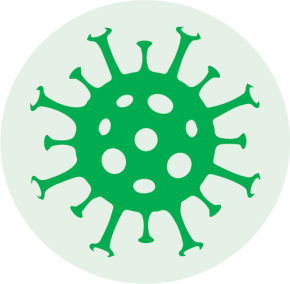

EDCTP portfolio: Emerging diseases
index


The CSIGN project is enhancing COVID-19 surveillance in Ghana to generate locally relevant data to guide public health responses.
Mapping the spread of COVID-19 in Ghana

Tracking of COVID-19 infections in the community is essential for understanding the spread of infections and for targeting public health measures to protect populations. However, many countries in sub-Saharan Africa have limited infectious disease surveillance capacity.
Data on infections feed into models that can be used to predict the spread of infection and to test the impact of public health interventions. However, in the absence of local data, parameters from high-income countries may have to be used, and may not accurately reflect the spread of COVID-19 in sub-Saharan Africa.
The challenge

Taking advantage of a well-established surveillance network for influenza in Ghana, the CSIGN project is gathering local data on COVID-19 and developing more contextually sensitive models to guide policymaking.
Ghana’s existing influenza surveillance network covers 22 sites. The project will add sentinel surveillance for COVID-19 to this network, as well as community-based reporting of COVID-19 symptoms via a mobile phone-based platform previously used to collect and disseminate information on cases and contacts during the Ebola outbreak in the Democratic Republic of the Congo.
The project will also adapt and enhance the existing influenza community reporting system so that it covers COVID-19, collects more sociodemographic and other information, and links to COVID-19 contact tracing activities. Genome sequencing of positive samples will be used to generate a detailed picture of transmission chains.
Data gathered through the surveillance activities will provide key information on factors such as reproduction number and the numbers of asymptomatic infections. This will feed into models that better represent the COVID-19 outbreak in Ghana and provide a better basis for testing the potential impact of interventions to inform public health decision-making.
The project

The CSIGN study will take advantage of an existing surveillance infrastructure to rapidly gain a clearer picture of the characteristics of COVID-19 transmission in Ghana. With the Ghana Health Service as a key member of the CSIGN consortium, the results will rapidly feed through into national decision-making and guide the response to the COVID-19 epidemic in Ghana. Furthermore, the approach provides a model that could be adopted by other countries in sub-Saharan Africa.
Impact


“
test the safety and efficacy of this new formulation in young children
”
Bringing antiretroviral drugs to children

The CHAPAS trials have ensured that many more children with HIV have benefited
from life-saving antiretrovirals.
EDCTP portfolio: HIV & HIV-associated infections
The challenge
Tracking of COVID-19 infections in the community is essential for understanding the spread of infections and for targeting public health measures to protect populations. However, many countries in sub-Saharan Africa have limited infectious disease surveillance capacity.
Data on infections feed into models that can be used to predict the spread of infection and to test the impact of public health interventions. However, in the absence of local data, parameters from high-income countries may have to be used, and may not accurately reflect the spread of COVID-19 in sub-Saharan Africa.

Taking advantage of a well-established surveillance network for influenza in Ghana, the CSIGN project is gathering local data on COVID-19 and developing more contextually sensitive models to guide policymaking.
Ghana’s existing influenza surveillance network covers 22 sites. The project will add sentinel surveillance for COVID-19 to this network, as well as community-based reporting of COVID-19 symptoms via a mobile phone-based platform previously used to collect and disseminate information on cases and contacts during the Ebola outbreak in the Democratic Republic of the Congo.
The project will also adapt and enhance the existing influenza community reporting system so that it covers COVID-19, collects more sociodemographic and other information, and links to COVID-19 contact tracing activities. Genome sequencing of positive samples will be used to generate a detailed picture of transmission chains.
Data gathered through the surveillance activities will provide key information on factors such as reproduction number and the numbers of asymptomatic infections. This will feed into models that better represent the COVID-19 outbreak in Ghana and provide a better basis for testing the potential impact of interventions to inform public health decision-making.
The project
The later CHAPAS-3 trial compared the efficacy and safety of three fixed-dose combinations including two without stavudine (found to have some long-term side effects in adults, leading to a recommendation that its use be discontinued in children). The trial the first of its kind in Africa studied nearly 500 children at four sites in two African countries.
The CSIGN study will take advantage of an existing surveillance infrastructure to rapidly gain a clearer picture of the characteristics of COVID-19 transmission in Ghana. With the Ghana Health Service as a key member of the CSIGN consortium, the results will rapidly feed through into national decision-making and guide the response to the COVID-19 epidemic in Ghana. Furthermore, the approach provides a model that could be adopted by other countries in sub-Saharan Africa.
ratios forfixed-dose combinations and on appropriatedosage according to weight.
The CHAPAS-3 trial confirmed the effectiveness of fixed-dose combinations, providing further impetus to the rollout of antiretrovirals to children. Its evidence on abacavir informed the WHO recommendation of abacavir-containing combinations for first-line therapy in children. Trial data have also been used to support applications for regulatory approval for new scored efavirenz tablets.
Impact
L’homme RF et al. Nevirapine, stavudine and lamivudine pharmacokinetics in African children on paediatric fixed-dose combination tablets. AIDS. 2008;22(5):557–65.
Mulenga V et al. Abacavir, zidovudine, or stavudine as paediatric tablets for African HIVinfected children (CHAPAS-3): an open-label, parallel-group, randomised controlled trial. Lancet Infect Dis. 2016;16(2):169–79.
WHO. Guidelines on the use of antiretroviral drugs for treating and preventing HIV infection: recommendations for a public health approach. 2010.
WHO. Consolidated guidelines on the use of antiretroviral drugs
for treating and preventing
HIV infection: Recommendations for a public health approach
(second edition). 2016
Projects: Children with HIV in Africa Pharmacokinetics and Adherence of Simple Antiretroviral Regimens (CHAPAS): CHAPAS-1 and -3
Project lead: Professor Chifumbe Chintu, University Teaching Hospital, Zambia (CHAPAS-1); Dr Veronica Mulenga, University Teaching Hospital, Zambia (CHAPAS-3)
Target population(s): Children with HIV
Sample size: 71 (CHAPAS-1); 480 (CHAPAS-3)
Countries involved: Ireland, the Netherlands, the UK, the USA, Zambia (CHAPAS-1); Uganda, Zambia (CHAPAS-3)
Project duration: 2005–2009 (CHAPAS-1); 2010 –2011 (CHAPAS-3)
EDCTP funding: €1.2M (CHAPAS-1); €4.6M (CHAPAS-3)
Total project funding: €1.2M (CHAPAS-1); €5.0M